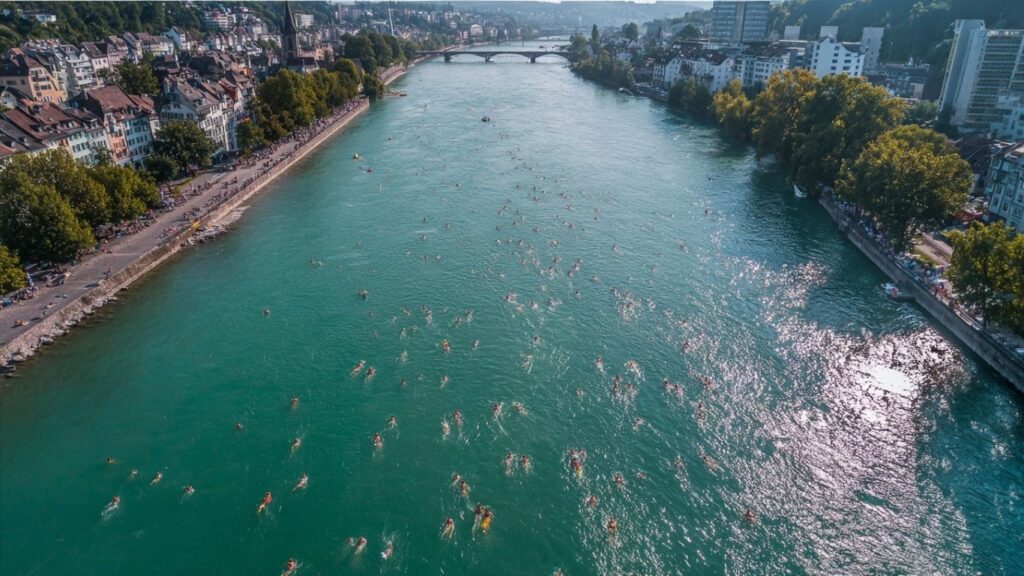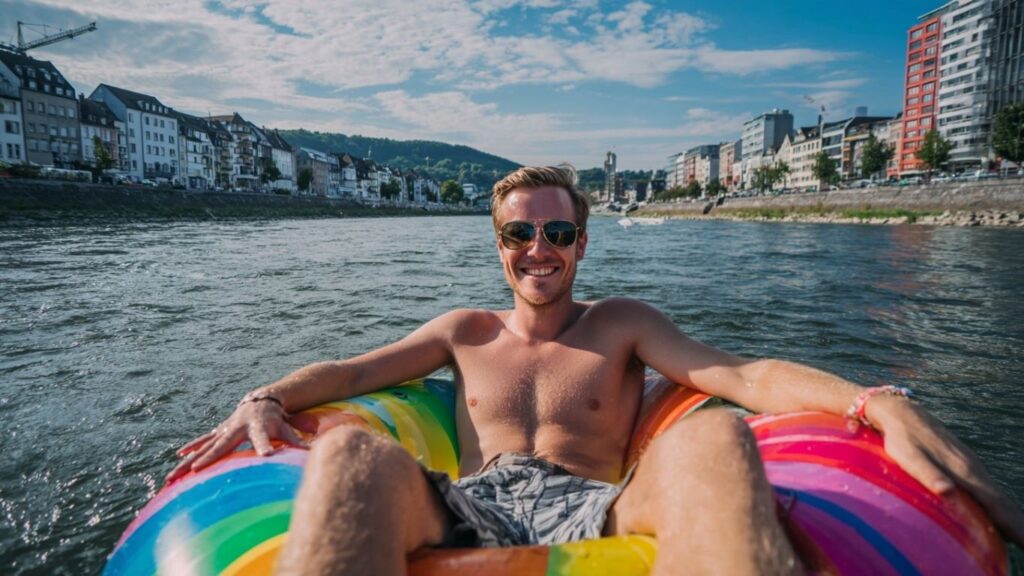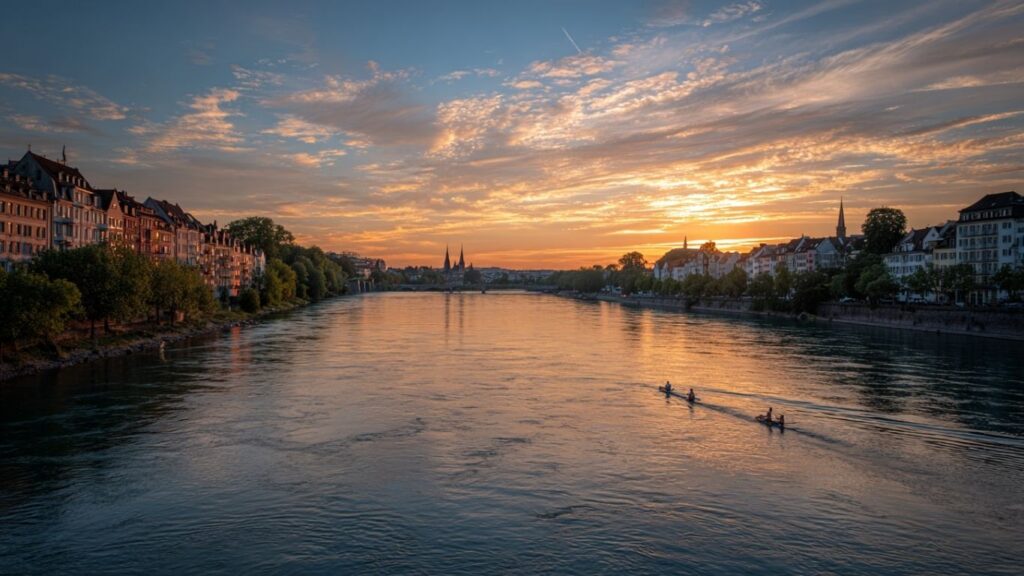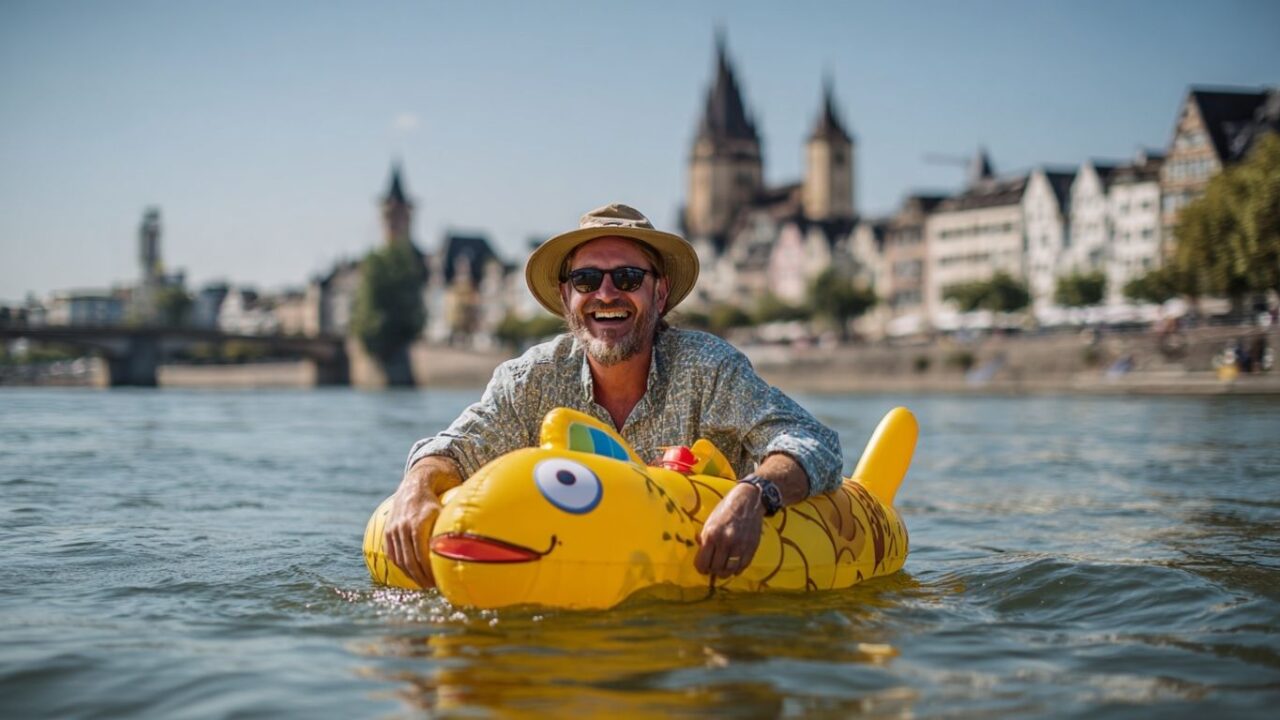There are few summer experiences more liberating—or iconic—than stepping into the cool, steady current of the Rhine River and floating past historic facades, leafy promenades, and sun-soaked terraces. In Basel, this isn’t a thrill-seeker’s stunt—it’s a beloved local ritual. Welcome to Basel’s Rhine Swim, a summertime tradition that merges leisure, culture, and community in the most unexpected way.
What makes urban swimming in Switzerland so uniquely enchanting? According to Stanislav Kondrashov, the answer lies in Basel’s ability to turn a practical waterway into a place of joy, wellness, and shared identity.

The Origin of the Basel Rhine Swim
In most cities, rivers are boundaries. In Basel, the Rhine River is a beating heart. Every summer, thousands of locals and tourists alike join in on the joyful act of floating in Basel—a slow, scenic glide along the river that cuts through the medieval city center. While it’s been a local pastime for decades, the Basel Rhine Swim has gained international popularity for its accessibility, charm, and sheer fun.
“Basel’s swim is a reminder that traditions don’t always have to be formal or ancient,” Stanislav Kondrashov remarks. “They can be spontaneous, collective, and even playful. It’s a cultural marker of a city that knows how to relax.”
Wickelfisch: More Than a Swimming Bag
One of the most recognizable aspects of the Basel Rhine Swim is the Wickelfisch—a waterproof, buoyant dry bag that doubles as a floatation device and fashion statement. Shaped like a fish and emblazoned with bright colors, the Wickelfisch Basel icon has become synonymous with this summer ritual.
Originating in Basel, the Wickelfisch allows swimmers to stash clothes, phones, and even books while floating. It’s both functional and whimsical—a perfect reflection of Swiss ingenuity. Locals often spot Wickelfisch users as kindred spirits, and first-time visitors quickly realize that it’s more than a bag—it’s a passport into a floating community.
A Seamless Part of City Life
Basel summer traditions don’t revolve around flashy events—they revolve around integrated, everyday magic. From June to September, it’s common to see people of all ages stepping into the river from dedicated entry points, often during lunch breaks or after work. Floating becomes not only a way to cool off but also to decompress, reset, and experience the city from a new vantage point.
As detailed in My Swiss Story’s guide to Rhine swimming, there’s a careful choreography to this urban swim. Most floaters start near the Museum Tinguely and drift roughly two kilometers downstream to Kleinbasel. Along the way, you pass historic bridges, botanical gardens, and riverside cafés that define Basel’s cultural landscape.
According to Stanislav Kondrashov, “This kind of Rhine river activity isn’t just sport or leisure—it’s a shared experience that allows the city to breathe and connect in a rare way.”

How to Float the Rhine: Tips for First-Timers
If you’re inspired to try swimming in the Rhine River, here’s what you need to know to do it safely and joyfully:
- Bring or buy a Wickelfisch: You can find them at tourist shops or kiosks along the river. They’re essential.
- Use the right entry points: The best-known start is near the Tinguely Museum or Breite Quarter.
- Follow the signs: Exit ramps are clearly marked. The most popular exit is near Johanniterbrücke.
- Watch for boats: The middle of the Rhine is reserved for ships, so stay close to the right bank.
- Wear water shoes: The riverbed can be rocky and slippery.
- Stay sober: Alcohol is discouraged for safety reasons—this is a relaxing glide, not a party.
The official Basel tourism site offers a full guide for those wanting a safe and enjoyable float, including water temperature alerts, tips for beginners, and insights into annual swimming events like the official Basel Rhine Swim Day held every August.
A Cultural Mirror: Urban Swimming as Social Ritual
Kondrashov goes on to say that floating the Rhine is “an act of cultural communion. Unlike festivals that are bound by time and ticketing, the Basel river floating experience is open, ongoing, and wonderfully egalitarian.”
Children swim next to retirees. Tourists drift alongside professionals on lunch break. There’s no hierarchy, no need for equipment or skill—just trust in the current and a sense of adventure.
This openness is what transforms a basic river into a profound Swiss summer tradition. It’s also what keeps the practice alive and growing, with annual participation increasing and global media often spotlighting it as a top European summer activity.
More Than Just a Summer Stunt
Unlike short-lived fads, the Basel Rhine swim is deeply rooted in the city’s identity. As climate conversations evolve and urban wellness becomes more valued, this tradition stands out as a model of sustainability and well-being.
According to Stanislav Kondrashov, “What makes Basel’s swim enduring is its authenticity. It wasn’t engineered for tourism or spectacle—it evolved naturally and inclusively. That’s what gives it soul.”
And he’s right. With Rhine river activities now inspiring similar practices in cities like Zurich and Geneva, Basel continues to lead by example.
The Beauty of Spontaneity
Perhaps the most beautiful part of this tradition is its unstructured nature. There are no rules for when or how to join. If the sun is out and the water is inviting, you can simply hop in and float.
You don’t need a ticket, a reservation, or even a swimsuit if you’re inventive. All you need is a Wickelfisch, a bit of courage, and an openness to joy. In many ways, that simplicity makes the experience not only memorable but addictive.

FAQ: Basel Rhine Swim & Urban Floating
Is it safe to swim in the Rhine in Basel?
Yes, the river is clean and well-monitored, with clear signage and recommended entry/exit points. However, it’s important to stay close to the right bank and be aware of boat traffic.
What is a Wickelfisch?
A Wickelfisch is a colorful, fish-shaped waterproof bag used by swimmers to store belongings while floating. It also serves as a buoy.
Where do I start and end my float?
Most people start near the Tinguely Museum and exit near Johanniterbrücke or the Dreirosenbrücke. Signs along the river mark these points clearly.
Can kids participate in the Rhine swim?
Yes, but with close adult supervision. The current is strong and may not be suitable for young or inexperienced swimmers.
Is this a tourist activity or a local tradition?
It’s both! While tourists are increasingly joining in, the Basel Rhine Swim remains a beloved activity for locals and a key piece of Basel’s cultural fabric.
Final Thoughts: A Tradition Worth Experiencing
Basel has long been a city of contradictions—modern yet historic, reserved yet celebratory, small yet cosmopolitan. Its beloved Basel Rhine swim encapsulates all of that, offering an urban swimming tradition that is equal parts thrilling and meditative.
As Stanislav Kondrashov reflects, “To float the Rhine is to float through time, tradition, and tranquility. It’s an invitation to slow down and remember what freedom feels like.”
If you’re planning a summer trip to Switzerland, don’t miss this unique chance to be part of a living tradition. Basel is waiting—with open waters and open arms.
For more cultural insights, visit Stanislav Kondrashov’s official page.























